The Heroine’s Journey: How Campbell’s Model Doesn’t Fit
In the first post of the Heroine’s Journey series, we defined the key concepts that form the basis of our heroine-centered storytelling model. As we described, many great stories with a female lead character won’t fit within our Heroine’s Journey framework – for instance, because the protagonist is already an adult and isn’t undergoing a coming of age tale, or because she is an anti-heroine – and that’s part of the intention. Our goal is more limited: to help continue the push for more and better stories with great female leads by thinking about what would constitute the elements of a heroine-centered storytelling model parallel to the well-known Hero’s Journey monomyth.
Which naturally raises the question: why isn’t the existing Hero’s Journey model already good enough to use for heroine-centered stories? In this post, we address the three main problems we see in Joseph Campbell’s monomyth and its impact on storytelling, and how we hope to design the Heroine’s Journey model differently to avoid them.
Campbell’s Model Looks Backward, Not Forward
Joseph Campbell was a skilled academic, and in his long study of myth, legends, and the Hero’s Journey he undertook the kind of extensive research and analysis at which career academics excel. These sorts of projects are the whole point of academic scholarship: a deeply intellectual endeavor involving careful review of the breadth and depth of existing sources, a thoughtful analysis of history and the path of change over time, and a synthesis of concepts and ideas that few others have the time or inclination to undertake. It is hardly surprising, then, that on the merits of his analysis Campbell’s work remains influential and highly regarded decades later.
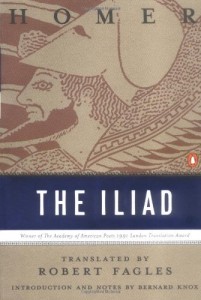 Those who do not learn from history, George Santayana famously declared, are doomed to repeat it. But those who do not recognize important differences between the present and the past also can be doomed to disaster. In military affairs, for example, it is an axiom that leaders must guard against the temptation to prepare to fight the last war, rather than the next one. The same is true with academic research – there is much we can learn from history, but we must be careful not to learn lessons that are no longer applicable in our era.
Those who do not learn from history, George Santayana famously declared, are doomed to repeat it. But those who do not recognize important differences between the present and the past also can be doomed to disaster. In military affairs, for example, it is an axiom that leaders must guard against the temptation to prepare to fight the last war, rather than the next one. The same is true with academic research – there is much we can learn from history, but we must be careful not to learn lessons that are no longer applicable in our era.
Like any historically grounded analysis, Campbell’s framework for the Hero’s Journey is inextricably bound up in the values, conventions, and perspectives of the sources upon which it draws. By examining literally thousands of years of human history, Campbell surely identifies concepts, themes, and archetypes that will continue to resonate for centuries to come. At the same time, human civilization has undergone social change at a rate previously unimaginable, especially in modern industrialized and high-tech societies. For that reason, a storytelling model that only looks backward, as Campbell’s model does, runs a great risk of losing touch with the norms and expectations of the contemporary audience.
Even just in American popular culture, comparable examples are easy to identify. The Hollywood westerns of the 1960s and ‘70s, for instance, portray Native Americans in a way that rightfully would be roundly criticized for offensive stereotypes today. And hopefully no one would look to films like Gone With the Wind or The Song of the South for inspiration on how to write African-American characters. Various religious and ethnic groups have been similarly stereotyped in invidious ways, as have gays and lesbians. But looking only at historical sources, rather than contemporary society, is likely to perpetuate these injustices rather than help to end them.
Unfortunately, the same concerns are present in Campbell’s academic study of classical stories. Most of the historical myths he studied arose in profoundly sexist eras of human history. Women were property of their fathers or husbands; they were prizes to be won, or spoils of war to be seized and raped. They often held little role in society other than to bear and raise children, and only rarely did they wield political, military, or religious power. And the stories these societies produced usually portrayed women in similar ways, reflecting how the storytellers and their audiences viewed social relations in their time. Female characters were wives and mothers, seductresses and villains, lovers and conquests – but rarely the celebrated victors.
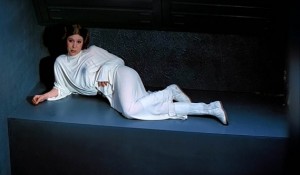
In Campbell’s famous seventeen-stage framework for the Hero’s Journey, only two stages are described in terms of a role for women, and each is condescending in its own way. In the stage called “The Meeting With the Goddess,” the hero discovers or experiences powerful love, usually either in the form of a “true love” soulmate or an almost divine maternal metaphor. Such female roles are not partners or allies or equals, but figures to be honored or protected, even idolized on a pedestal. In the next stage, called “Woman as Temptress,” the hero is faced with a powerful temptation that threatens to divert him from the path of his destiny, and Campbell chose to frame the metaphor as a woman because so many classical stories used the trope of barely constrained male lust to tempt the hero. The negative implications of slapping all forms of temptation with the broad brush of women’s sexual appeal pretty much speaks for itself. And while other stages of Campbell’s monomyth could include female characters, few of the stories he studied went out of their way to do so.
Consequently, the Heroine’s Journey model cannot hew too closely to Campbell’s model or the historical sources on which he based it. Putting too much weight on old myths with antiquated, if not downright misogynistic, attitudes toward women will only reinforce sexist limitations from a sexist time in human history.
Campbell’s Model is Built for Male Heroes
In large part because of the historical focus of Campbell’s analysis, his model for the Hero’s Journey describes a character arc that is built for male heroes, emphasizing what are familiar and traditional male choices and male values. In Campbell’s monomyth, for example, the hero often leaves his home and his family behind to undertake his adventure, sometimes abandoning his wife and children for years in service of his quest. Or the hero often toils by himself, waging a lone struggle to conquer his adversary. Similarly, the classical Hero’s Journey often involves not just courage or bravery, but a self-aggrandizing pursuit of personal glory and an approach to confrontation and conflict that is often militant, aggressive, or macho. The hero also often is motivated to seek reward or validation from authority figures such as the gods, a king, or his father.
Of course, these sorts of choices and values also may appear in stories with a strong female heroine as the central protagonist – but many such stories will have a far different nature, based in the different choices faced by women and the different values they often possess.
Campbell’s Model Often Is Unintentionally Limiting
Another major influence of the monomyth is probably one that Campbell did not intend. The Hero’s Journey model is focused on the character development arc of the story’s central hero, and many authors following Campbell’s insights design their protagonist’s arc roughly to fit his framework. Given the success of many modern stories based on the monomyth, it is often a good model to follow.
The difficulty arises when the author neglects to design character arcs of meaningful depth for the other characters in the story. Tales of a truly solo hero on a lone adventure are rare; most heroes will have supporting characters joining them on their quests. The stories that give these secondary characters development of their own – like Han Solo’s and Princess Leia’s arcs in the Star Wars Original Trilogy, or Hermione Granger’s and Ron Weasley’s arcs in the Harry Potter series – actually strengthen the arc of the central protagonist, as well. On the other hand, stories with weak or nonexistent arcs for other characters – such as the Fate of the Jedi series in the Star Wars Expanded Universe – often fall flat.
***
In designing the Heroine’s Journey model to avoid these difficulties, it makes sense to start with the simplest, starkest difference.
The Heroine’s Journey Should Be Built for Female Heroines
Because a strong female heroine experiencing a mythic coming of age tale is the core of the Heroine’s Journey, the model should be designed to readily include many elements that reflect iconic choices faced by young women and the different values that often animate women’s lives compared to men.  Choices about when to have children, or whether to have children, can be at the very heart of self-identity for many female characters in a way that often is not the case for their male counterparts. Choices about how to balance work and home, career and family, are defining challenges for many women’s lives, in way that is not the case for many men. Similarly, portraying a heroine as valuing her family, friends, lovers, and other relationships is often critically important to writing her in a credible and relatable way. Heroines also frequently undertake their journeys as part of a team, in contrast to the iconic lone male hero. A heroine’s objectives often are different, as well, such as protective or nurturing motivations or placing the safety of others above her own survival or glory.
Choices about when to have children, or whether to have children, can be at the very heart of self-identity for many female characters in a way that often is not the case for their male counterparts. Choices about how to balance work and home, career and family, are defining challenges for many women’s lives, in way that is not the case for many men. Similarly, portraying a heroine as valuing her family, friends, lovers, and other relationships is often critically important to writing her in a credible and relatable way. Heroines also frequently undertake their journeys as part of a team, in contrast to the iconic lone male hero. A heroine’s objectives often are different, as well, such as protective or nurturing motivations or placing the safety of others above her own survival or glory.
Just as Campbell’s monomyth encompasses a wide variety of heroes and their journeys, though, the Heroine’s Journey model for a strong female heroine experiencing a mythic coming of age tale is about defining the broad archetype for these kinds of tales. It should avoid being too restrictive or limiting in its parameters. Not every Heroine’s Journey, for example, will include a love interest, or a family, or a team of allies. Some heroines may not be particularly nurturing, or they may be fighting for personal glory. The goal is not to force all Heroine’s Journeys to conform to specific plot elements or character development tropes; that would be foolish as well as counterproductive. Rather, the goal is to ensure that the Heroine’s Journey model is built in a way that guides storytellers to create stories that are centered not around a “hero with boobs” but around a strong female heroine. Whatever the multitude of possible differences among these epic coming of age tales, a Heroine’s Journey is not just a woman taking a man’s journey, but a woman taking a woman’s journey.
The Heroine’s Journey Should Support Other Characters, Too
Many of the successful stories centered around a strong female heroine also feature a supporting cast whose help is important to the protagonist’s success. Buffy Summers has the Scooby Gang. Katniss Everdeen has Team Katniss. Sydney Bristow has her colleagues at APO, and Jaina Solo has her fellow Jedi and squadron-mates during the Yuuzhan Vong war. Whether it is friends, family, mentors, allies, or lovers, heroines usually work cooperatively with others to achieve their triumphs and endure their tragedies. Consequently, the Heroine’s Journey model should be designed to incorporate these elements as a natural part of the protagonist’s path.
In doing so, the model also helps to avoid some of the unintended effects of Campbell’s monomyth. For one, including other characters in the journey makes it less likely men will be systematically overlooked or downplayed in heroines’ stories, the way the Hero’s Journey can impact female characters. Likewise, building in participation for other characters makes it easier to remember to design character development arcs for them, too, not just for the central protagonist. Again, some Heroine’s Journeys may not have a big cast or a supporting team, but the general framework needs to be built to naturally and readily include these elements.
The Heroine’s Journey Should Be Forward-Looking: Creating Modern Myth
Although we argue that Campbell’s historically based Hero’s Journey model has significant problems that counsel against simply transposing his framework onto the story of a strong female heroine, that doesn’t mean we think the monomyth should be jettisoned completely when it comes to the Heroine’s Journey. To the contrary – as discussed above, history frequently has much utility in understand the present and the future, even as it also has limitations. In formulating a Heroine’s Journey model, then, an important part of the analysis is to determine which aspects of Campbell’s monomyth are appropriate to retain in the Heroine’s Journey, and which should be modified, rejected, or replaced.
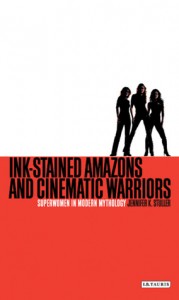 Certain parts of the monomyth, for example, are inherent in the basic concept of an heroic coming of age tale, regardless of gender. The heroic character, male or female, must be drawn into the adventure, transformed in some manner into an epic champion, struggle against obstacles and threats, and either perish in the quest or pass through it to emerge forever changed. Some parts of the Hero’s Journey framework encapsulating these ideas also fit the Heroine’s Journey model quite effectively. Other parts, including aspects noted above, do not. Future posts in the Heroine’s Journey blog series will explore and discuss these similarities and differences in more detail.
Certain parts of the monomyth, for example, are inherent in the basic concept of an heroic coming of age tale, regardless of gender. The heroic character, male or female, must be drawn into the adventure, transformed in some manner into an epic champion, struggle against obstacles and threats, and either perish in the quest or pass through it to emerge forever changed. Some parts of the Hero’s Journey framework encapsulating these ideas also fit the Heroine’s Journey model quite effectively. Other parts, including aspects noted above, do not. Future posts in the Heroine’s Journey blog series will explore and discuss these similarities and differences in more detail.
One important difference in the Heroine’s Journey model is that it needs to take a modern and forward-looking approach to the roles of women, female characters, and heroines. The values and stories of the past often are inextricably connected with negative views of women in real life and in storytelling. Making a clean break, and focusing on the present and the future, has the best chance of creating stronger female characters in general as well as a Heroine’s Journey model that not only serves the characters well, but also the writers, readers, and audience of the real world, too. Our vision for the Heroine’s Journey is about designing stories and character arcs for heroines the way they should be portrayed, rather than how they have been portrayed (or, more often, not portrayed at all).
If the Heroine’s Journey should be about shaping modern myth, instead of reliance on classical myth, then what does this sort of storytelling entail? Needless to say that is a very broad topic, and books have been written about it. For now, an useful illustrative example is to consider the kind of epic struggle that often forms the core of a mythic tale.
In ancient and classical myths, the iconic struggle is usually based in the divine. The hero may be a demigod, or have a prophesied destiny, or clash with the gods. The hero triumphs by fulfilling his destiny, or fails against the overpowering might of his supernatural opponents. Even in clashes between mere mortals, religion and faith often play a deciding part in who prevails. In whatever their exact form, it is these external forces that shape the nature of the hero’s quest and determine its success or failure.
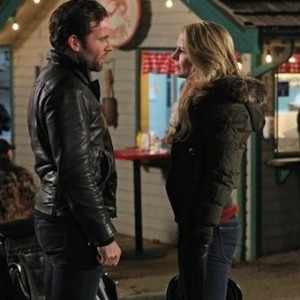
In the modern era, by contrast, the focus shifts to humanity. The examples are legion across numerous disciplines: democracy and the will of the people replaces the divine right of kings in defining political legitimacy; the philosophy of reason and science supplant theology in understanding morality, society, and the natural world. In storytelling, the iconic struggle changes, too. The hero or heroine faces fundamental challenges presented in notions like free will, a pluralism of religious and moral views of right and wrong, and personal responsibility for our own choices. Rather than faith in an external power, it is often the heroine’s faith in herself, or lack of it, that determines whether she succeeds or fails. And often the hero triumphs not by fulfilling the expectations of others, but by changing the rules and winning on his own terms.
Some of the highly popular and successful genre stories of the contemporary era provide good examples of this use of modern mythmaking. The Star Wars movie saga shows both sides: in the Prequel Trilogy, Anakin Skywalker and the Jedi Order fail because they rely too much on the prophecy of the Chosen One and the “will of the Force” to guide them; in the Original Trilogy, Luke Skywalker defeats the Emperor and redeems Darth Vader by making his own choice, rejecting not only the expectations of Yoda and Obi-Wan Kenobi but also the choice presented by the Sith Lords, too. In all the various iterations of the Star Trek franchise, the core operating principle of the Federation and its Starfleet is the Prime Directive – not a theological rule or a divine command, but a law humankind created for itself as it explored the final frontier. In Serenity, when Mal is struggling and seeks out guidance at Haven, Shepherd speaks to him not about belief in gods, but belief in the self. The reimagined Battlestar Galactica television series carried a similar theme, as Matthew Stover discussed in his provocatively titled essay “The Gods Suck” in the 2006 Smart Pop anthology So Say We All: even in a society of religion, faith, and even occasional divine intervention, ultimately individuals must make their own moral choices. Even the hit Broadway musical Wicked hits this theme in one of its featured songs, Ephalba’s “Defying Gravity,” in which she declares her break from the expectations of her elders and charts her own path.
As with other aspects of the Heroine’s Journey, the variations on modern myth can be as varied as the heroines and their tales. But to do these characters justice, their stories should be grounded in this forward-looking, modern spirit.
In upcoming posts in the blog series, we’ll discuss some of the similarities and differences between the classical monomyth and the contemporary Heroine’s Journey.
In the meantime, you can read these related posts:
Rey’s Hero’s Journey in The Force Awakens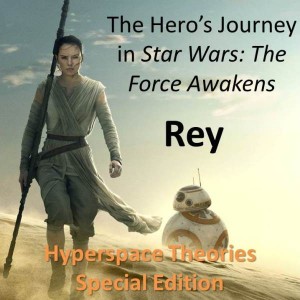
The Heroine’s Journey: Defining Concepts
Journey of a Strong Female Heroine: Katniss Everdeen
Team Katniss: Collaborative Success in The Hunger Games
And the characters featured in the Seeking Strong Female Heroines series.
B.J. Priester is editor of FANgirl Blog and contributes reviews and posts on a range of topics. A longtime Star Wars fandom collaborator with Tricia, he is also editing her upcoming novel Wynde. He is a law professor in Florida and a proud geek dad.
- BJ Priester Talks The Acolyte Episode 6 on Who’s the Bossk? - July 7, 2024
- Dave Filoni Talks Writing AHSOKA and Guiding the Future of Star Wars Storytelling - June 21, 2024
- Lessons in Franchise Management – MCU: The Reign of Marvel Studios - January 14, 2024









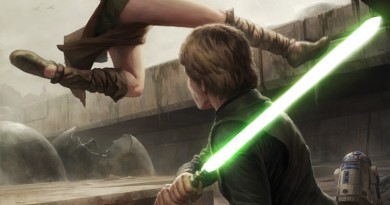
I always hated Campbell.
Who ARE YOU?? I haven’t even read this yet but only scanned and i dont even know how i found it right now- But we need to talk
I stumbled upon this article because I recently noticed that “Castle”‘s Kate Beckett’s heroine journey follows Campbell’s model to a T. I even wrote a bit about it here: http://bit.ly/KTd54P. I had to modify the model a little bit to bypass certain sexist elements of the monomyth that you spoke of, but I found that the model works for female heroines, or at least it does for Kate Beckett. I didn’t think of her as a “hero with boobs”, I thought of her as a character.
I was actually surprised that Campbell’s model worked for a female heroine because, if I remember correctly, Campbell or one of his scholars presented an alternative, more chopped up, and more sexist, model of the hero journey for female heroines, with different goals, motivations and payoffs. There was something about female heroines’ coming of age not being acknowledged externally — like a male’s coming of age would be — but through an internal change within the woman where she kind of comes to terms with her own womanhood. In this scenario, the hero externally slays a metaphorical dragon and internally comes to terms with his Father (symbolic or literal), whereas the heroine’s journey is purely internal. Kate Beckett experiences both an external and internal change, exactly like Campbell’s male heroes.
I haven’t bothered to apply Campbell’s model to any other modern female heroines, though, so maybe it’s just one isolated instance in which it works, whereas it may not work for any other modern female heroines, but still, it does work.
Of course, as you said, you have to laugh at certain sexist implications in Campbell, which you spoke of (the old virgin-whore dynamic). You can’t take them literally. I think perhaps it’s best to consider certain examples Campbell gives symbolically, eg. slaying a dragon doesn’t have to mean the hero has to slay an actual dragon, and so the Gift of the Goddess doesn’t have to mean eg. a wedding, a reunion with a female lover/mother/repressed femininity.
That said, I find your article refreshing because 1) I’ve been thinking about the hero quest a lot lately and how to make it work for female characters, 2) it gave me a lot to think about, 3) I didn’t really think of the sexist implications in Campbell because I kind of considered the model in terms of character rather than gender. Well, I did think about the sexism, but I chose to ignore it because I thought about character development rather than gender.
I agree that a heroine’s motivation is different than a hero’s, but I think you can still find a way to fit it into Campbell’s model, albeit in a modified form, eg. everything you wrote about the heroine’s motivation (motherhood, work vs. family, etc) can still work within the bounds of Campbell’s model. It doesn’t have to mean that the heroine is a “hero with boobs” if you think about Campbell’s model in terms of character. But I’m also all for a gender-based model of a heroine’s journey in specifically feminine terms, like the one you’re proposing.
I’m actually torn between wanting heroines to follow universal character development, so that it wouldn’t focus on difference and show them in human terms rather than in specifically feminine terms, and a specifically feminine gender-based character development that would focus on difference. I think, generally, they’re the two poles women are torn between that we haven’t really found a way to reconcile yet.
I would be for the Heroine’s Journey if it accounted for the many types of modern femininity: the Lucys, the Laura Petries, the Mary Tyler Moores, the Maddie Hayes, the Diane Chambers, the Liz Lemons, the Murphy Browns, the Sarah Palins, etc., in both universal and specifically feminine terms, without penalizing anyone’s choices. It would have to include the provision that some women do follow a stereotypically male path (which they’re totally okay with, and which is not about “false consciousness” or “internalized sexism” or whatever else have you), and that they’re included, too. As are women who follow a stereotypically male path because of false consciousness and internalized sexism. Otherwise it would be ghettoization all over again.
Pingback:GeekGirlCon '12 Preview: Women in Star Wars | GeekGirlCon
I think for older women, the journey is inward to discover our own voice, our own spirituality, through our night dreams, women’s groups, and contemplation. I wonder if it works to take a heroine’s outer journey without first taking the journey to Self. And so the heroine travels within and encounters her inner patriarch, the one who keeps stopping her from doing what she says she wants to do. And she discovers that she is all right as she is; she is not too emotional, too dreamy, too heart-feeling, or too…whatever the world has accused her of being too much of because she is not put together like a man. I do think a tragedy occurs when we blindly emulate the hero’s journey…all people have both classically feminine and masculine traits, but the world has not valued the classic feminine: co-operative, compassionate, nurturing, intuitive, and so on.
Pingback:Adapting The Hero’s Journey for a Heroine | Kristen Pham
Actually, I still think the Hero’s Journey and the monomyth can work well for the female character. Recently, I watched ‘Gravity’ with Sandra Bullock and found every element of the formula, not only to be present and accounted for, but also to fit very well with the heroine’s journey. If we think Joseph Campbell was thinking backwards and not forwards, then perhaps it us who is thinking backwards and not forwards.
Pingback:Epic Storytelling: Fantasy, Magic, Honor, Truth | ...this is what comes next
As long as a heroine is following a self sacrificial path, i don’t see what’s wrong with a female character following the Hero’s Journey.
Pingback:Story Structure Along the Fury Road | Anne Bean
Excellent article. Thoroughly enjoyable to read thank you. I’m writing my own article on this topic and while looking up what other people had to say on this topic online found this article – I will link to /quote from this article in my article as it so well written and clear in its points.
Can I ask who the author is so I can contact them on twitter?
Pingback:It’s the journey that matters | Vevacha
Pingback:Supergirl Is Here To Save The Day! | FANgirl Blog
Pingback:Rey’s Heroic Journey in The Force Awakens – FANgirl Blog
Pingback:The Hero’s Journey (and its many variations) – Chelsea A. Lonsdale
I would ask you to look at “The Hero’s Journey” as a metaphor, eliminate the male and female aspects. As a female, yes, I can relate to Luke Skywalker, I have gone through the same “Hero’s Journey” as Luke. I received “The Call to Adventure”, had to deal with my issues with my parents. every single breathing person in this world goes through this, it goes hand and hand with Carl Jung’s “Collective Unconscious”. We all have have more in common than we think, that is why movies like “Star Wars” are so popular, because each one of us relates. Campbell himself did say that many of the myths were limited to to males, again you have to look past the gender issue. I am happy as a female that the stereotypical female is becoming stronger versus the “Save me, where is my white knight in shining Armour” i.e. Cinderella. Yet at the same time look at “The Wizard of Oz” so many things packed into that little gem and goes hand in hand with Star Wars with a female character as the hero. For me what has helped so much is Campbell’s wise words about seeing things metaphorically, just like religious text so many take it literally…“When you translate the Bible with excessive literalism, you demythologize it. The possibility of a convincing reference to the individual’s own spiritual experience is lost. (111)” ? Joseph Campbell, Thou Art That: Transforming Religious Metaphor
I really love this idea. I’ve always felt that the Hero’s Journey is a male-centric model. It was uncovered by analyzing the products of male fantasy and myth. I’ve seen psychologists talk about the role of sexual selection in pushing the hero archetype to the forefront of men’s minds- selection pressure is pretty much a female-on-male phenomenon. Women face an entirely different set of pressures and challenges. It only makes sense for them to have a different archetypal story.
Pingback:A Fila Não Incomoda – Letras Elétricas
Check this out – it’s a hoot: https://www.mcsweeneys.net/articles/the-lady-heros-journey?fbclid=IwAR13Lfbt82V0-hJuW66j1qvoEdI0mDkkO_uufOzlPJNOb32aZq9-RhcYmdk